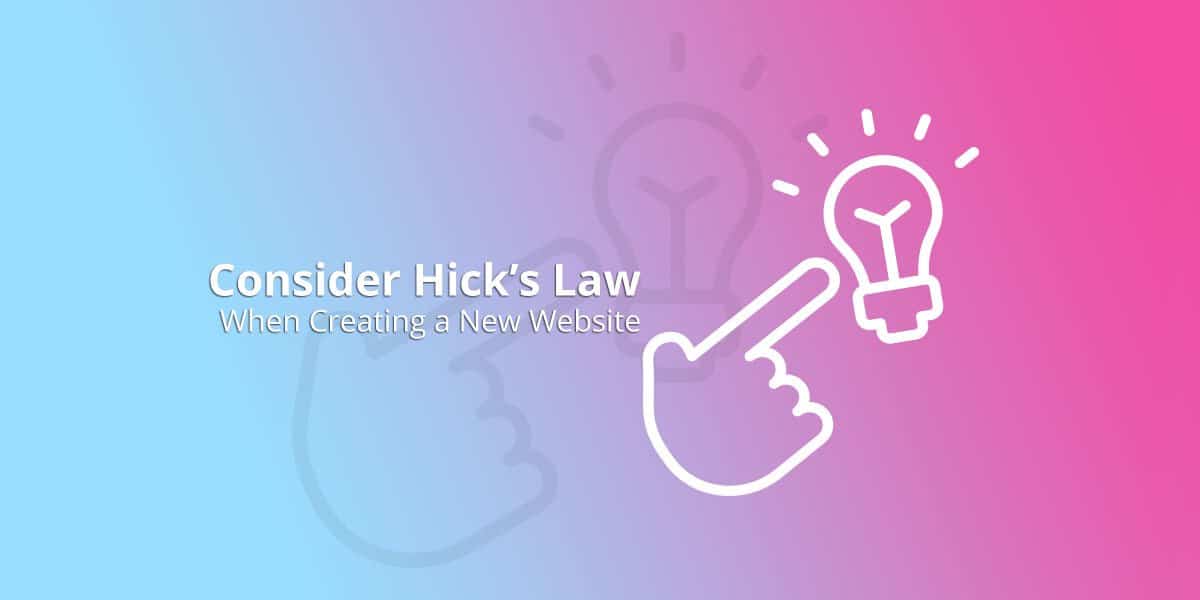When diving into the world of website design, it’s crucial to grasp concepts that directly impact user experience and decision-making. One such principle is Hick’s Law. It’s not just a theory but a practical guide that, when applied, can significantly enhance the efficiency and appeal of your website. Let’s explore what Hick’s Law is and why it should be at the forefront of your mind during the website creation process.
Understanding Hick’s Law
 Hick’s Law, originating from psychology, describes the time it takes for a person to make a decision based on the number of choices available. Simply put, the more options presented, the longer it takes to decide. This concept, while straightforward, has profound implications in various domains, especially in website design where decision-making is constant.
Hick’s Law, originating from psychology, describes the time it takes for a person to make a decision based on the number of choices available. Simply put, the more options presented, the longer it takes to decide. This concept, while straightforward, has profound implications in various domains, especially in website design where decision-making is constant.
The Impact of Hick’s Law on Website Design
Applying Hick’s Law to website design means acknowledging that every additional choice you offer increases the time users take to navigate and interact with your site. A cluttered navigation menu or too many calls to action (CTAs) can lead to analysis paralysis, where the user feels overwhelmed and possibly abandons the site altogether.
Applying Hick’s Law in Website Design
- Simplifying Navigation: Aim for a clean, intuitive navigation structure that guides users without overwhelming them.
- Limiting Choices: While variety is valuable, too much of it can deter users. Strike a balance by offering enough options to engage but not so many that they’re overwhelmed.
- Enhancing User Decision-Making: A well-organized site that follows predictable patterns aids quicker decision-making and improves overall user satisfaction.
Practical Tips for Implementing Hick’s Law
- Design with Clarity and Consistency: Ensure your website’s design is coherent, and content is easily digestible to facilitate swift decision-making.
- Optimize Page Load Times: A faster website can improve decision-making speed and user engagement.
- Use Progressive Disclosure: Present information and choices in a way that doesn’t bombard the user all at once, revealing more options as needed.
Examples of Hick’s Law in Action
Consider a website with a simplified checkout process compared to one with multiple steps and choices. The former, adhering to Hick’s Law, typically sees higher conversion rates due to the reduced decision-making time.
FAQs
- Isn’t limiting choices bad for business?
- Not necessarily. Limiting choices to relevant, value-adding options can enhance user satisfaction and decision-making efficiency.
- How can I apply Hick’s Law without making my site too simple?
- Balance is key. Use design and content strategies to present information and choices clearly without sacrificing essential elements.
- Can Hick’s Law be applied to all types of websites?
- Yes, Hick’s Law is versatile and can be adapted to suit e-commerce, informational, and other website types.
- How do I know if my website complies with Hick’s Law?
- User testing and feedback are crucial. Observe how users interact with your site and adjust based on their behaviors and preferences.
- Does Hick’s Law apply to mobile websites as well?
- Absolutely. With smaller screens and potentially shorter attention spans, applying Hick’s Law to mobile design is even more critical.






